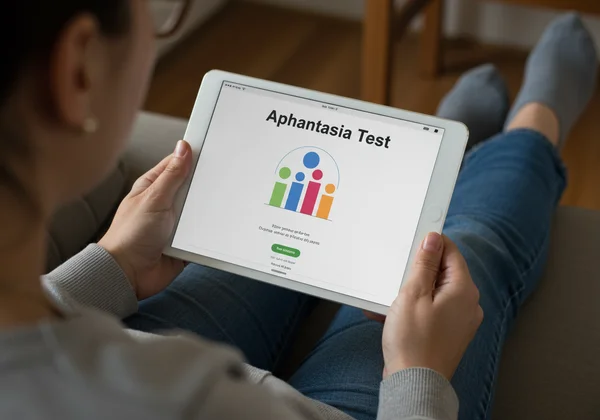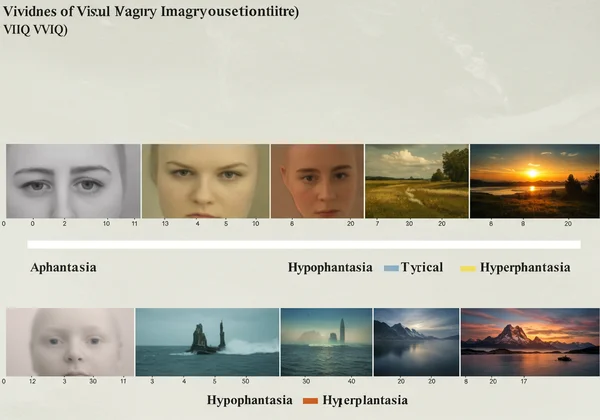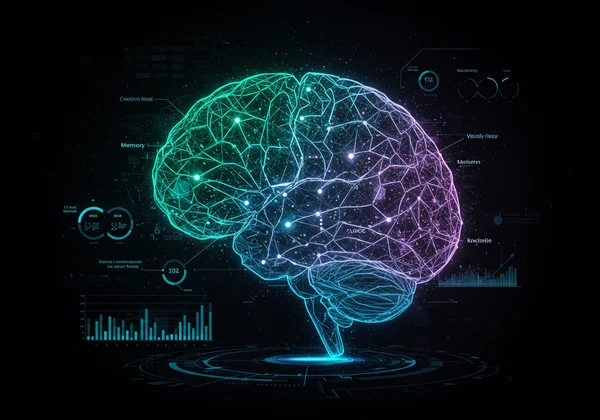Aphantasia Test Results Explained: Your Mind's Eye Scores
Have you just completed an aphantasia test and are now staring at a score, wondering what it all means? Or maybe you're curious about taking one but want to understand the results first. How to tell if you have aphantasia? This journey into your mind's eye can feel both exciting and a little confusing. This guide is here to illuminate your path, helping you interpret your results and understand your unique visual imagery capacity. Your journey of self-discovery starts now, and understanding is the very first step. If you haven't yet, you can take the test today.

Interpreting Your Aphantasia Test Scores & VVIQ Principles
The first step after receiving a score is to understand the framework behind it. Most credible self-assessments, including our free online aphantasia test, are inspired by the principles of the Vividness of Visual Imagery Questionnaire (VVIQ). This is a scientifically recognized tool used in cognitive psychology to measure the clarity and liveliness of a person's visual imagination. Think of it not as a pass/fail exam, but as a compass pointing toward how your internal world is painted.
The core idea is simple: the test presents scenarios and asks you to rate how vividly you can "see" them in your mind. A low score suggests less vivid—or entirely absent—visual imagery, while a high score indicates a very active and detailed mind's eye. This isn't about artistic skill or intelligence; it's purely about the sensory experience of your imagination.
Decoding Your VVIQ Score: What Each Level Indicates
Understanding your VVIQ score is about placing yourself on a continuum of human experience. When you complete a visual imagery vividness test, your results typically fall into a few key ranges, each describing a different way of experiencing thought.
-
Low Scores (Aphantasia Range): If your score is at the lowest end of the scale, it indicates that you likely experience aphantasia, or "mind blindness." This means when you try to imagine something, like the face of a loved one or a setting sun, you don't see an image. You know what these things look like conceptually—you can list facts about them—but there is no visual component to your thought.
-
Mid-to-Low Scores (Hypophantasia Range): Many people fall into this category. Hypophantasia means you have a mind's eye, but the images it produces may be dim, fleeting, or vague. You might be able to conjure a fuzzy outline of an apple but struggle to see its color, texture, or the reflection on its surface.
-
Mid-to-High Scores (Typical Imagery): This is the range where most people score. It signifies the ability to create reasonably clear and detailed mental images. You can visualize scenes, faces, and objects with a moderate degree of control and vividness.
-
Very High Scores (Hyperphantasia Range): At the opposite end of the spectrum from aphantasia is hyperphantasia. Individuals with this trait experience mental imagery that is exceptionally vivid, detailed, and realistic—almost like watching a movie inside their head.

Aphantasia vs. Hypophantasia: Understanding the Spectrum of Imagery
It's crucial to recognize that the spectrum of imagery is vast and fluid. Aphantasia isn't a simple on/off switch; it’s one point on a wide continuum of human cognition. Many people who first suspect they have aphantasia discover through a self-assessment that they actually have hypophantasia.
The distinction is important for self-understanding. Someone with aphantasia processes the world through facts, concepts, and an inner monologue without accompanying pictures. In contrast, someone with hypophantasia has access to visual thought, but it isn't their dominant mode of thinking. Recognizing where you are on this spectrum can be incredibly validating and help you understand why certain tasks, like guided meditation or remembering directions visually, might be challenging.
Recognizing Common Traits: Do Your Results Resonate with Experience?
A test score is just data. The real "aha!" moment comes when you connect that number to your lived experiences. Do your results reflect the common traits you've noticed in your own life? For many, learning about aphantasia is like finding a name for something they've always felt but couldn't describe.
People with low visual imagery often report things like:
- Memory is fact-based: They remember events by recalling facts, conversations, and feelings rather than re-watching a scene in their mind.
- Difficulty remembering faces: They might recognize people easily but struggle to conjure a clear image of their face from memory.
- Reading is a conceptual experience: When reading a book, they absorb the plot, characters, and ideas without creating a mental movie of the scenes.
- Strong abstract thinking: Many excel in fields that rely on logic, patterns, and systems, such as mathematics, programming, or philosophy.
If your test results align with these experiences, it’s a strong indicator that you’re on the right track to understanding your unique cognitive style. This discovery isn't about a deficit; it's about a difference.
After Your Aphantasia Test: Navigating Your Next Steps
So, you have your results. What now? This is where the journey truly begins. Receiving a score from an aphantasia test is just the starting point. It opens a door to deeper self-awareness and empowers you to explore how your mind works. Your score gives you a label, but the next steps give you a map for navigating your inner world with newfound clarity.
The most important thing is to move from "what" to "why" and "how." What your score is matters less than why you think the way you do and how you can leverage your cognitive strengths. This is about embracing your personal processing style.
The Value of Deeper Analysis: Why Explore Your Cognitive Profile Further?
A single score provides a snapshot, but it doesn't paint the whole picture. To truly understand your mind, you need to explore your broader cognitive profile. Your ability to visualize is just one facet of your intellect. How do you problem-solve? How do you learn and remember? What are your innate creative strengths?
A basic score can't answer these questions. A deeper analysis, however, can connect the dots between your visual imagery level and other cognitive functions. It can help you identify potential challenges—like difficulty with certain memory techniques—and highlight surprising strengths, such as superior abstract reasoning or conceptual thinking. This deeper understanding is key to personal and professional growth.

Unlocking Personalized Insights: Our AI-Powered Deep Analysis Report
This is where technology can offer profound insights. Beyond our free test, we offer an optional, AI-powered report designed to provide a comprehensive and personalized analysis. After answering additional situational questions, our AI algorithm analyzes your responses to create a deep-dive report that goes far beyond a single score.
This isn't just another number. The AI aphantasia report explores:
- Your Unique Cognitive Style: It details how your level of mental imagery may influence your thinking patterns.
- Potential Strengths: It identifies areas where your cognitive style gives you an advantage.
- Potential Challenges: It offers awareness of situations where your mind might work differently from others.
- Personalized Strategies: It provides tailored suggestions for learning, creativity, and memory that align with how your brain is wired.
This report is designed to be an empowering tool for anyone looking to transform self-discovery into actionable insight. If you're ready to go deeper, you can unlock your report.
Beyond the Test: Connecting with Resources & Community Support
Discovering you have aphantasia or hypophantasia can sometimes feel isolating, but you are not alone. Millions of people share this cognitive trait. One of the most powerful next steps is seeking community support. Online forums, social media groups, and communities are filled with people sharing their experiences, strategies, and stories.
Engaging with these communities can be incredibly validating. You’ll find people who understand your perspective without needing an explanation. This shared experience helps normalize aphantasia, transforming it from a curious anomaly into a recognized part of human neurodiversity. Exploring these resources is a vital step in embracing your unique mind's eye.

Your Journey Continues: Embrace Your Unique Mind's Eye
Understanding your aphantasia test results is a significant step on a lifelong journey of self-exploration. Your score is not a label that defines you but a key that unlocks a deeper understanding of your mind. It’s a tool that allows you to appreciate the unique and powerful ways you process the world around you.
Whether you have vivid hyperphantasia or a quiet mind's eye, your cognitive style has its own set of strengths. The next step is yours to take. Continue your exploration, connect with others, and learn to harness the incredible power of your unique mind. Are you ready to explore your mind's eye?
Frequently Asked Questions About Aphantasia Test Results
How to tell if you have aphantasia?
The most reliable first step is to take a well-designed self-assessment. A good aphantasia test will guide you through a series of visualization tasks based on scientific principles like the VVIQ. If you consistently find that you cannot form any mental image and your thoughts are purely conceptual, you may have aphantasia. For a clear starting point, our self-assessment tool can provide valuable insight.
Is aphantasia neurodivergent?
Yes, aphantasia is increasingly recognized as a form of neurodiversity. It's not a disorder, a disease, or a defect. Instead, it is considered a natural variation in human cognition, just like dyslexia or synesthesia. It simply means your brain processes information, particularly visual data, in a different way than what might be considered typical.
What are people with aphantasia good at?
While experiences vary, many people with aphantasia report strengths in areas that don't rely on visual imagery. These often include abstract, logical, and conceptual thinking. They may excel at mathematics, computer science, philosophy, and other fields where patterns and systems are more important than mental pictures. Their fact-based memory can also be incredibly accurate and detailed.
How do people with aphantasia remember things?
People with aphantasia primarily rely on their semantic memory (facts, concepts, and knowledge) rather than episodic memory (re-experiencing past events visually). They remember the "what" rather than the "how it looked." For instance, they will remember that they went to the beach, who they were with, and the key things that happened, but they won't be able to replay the scene as a visual memory.